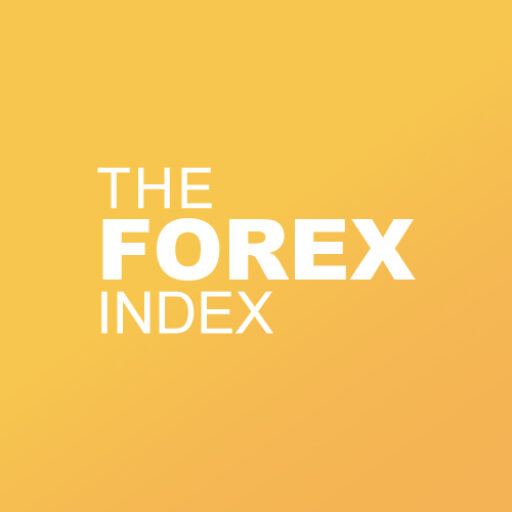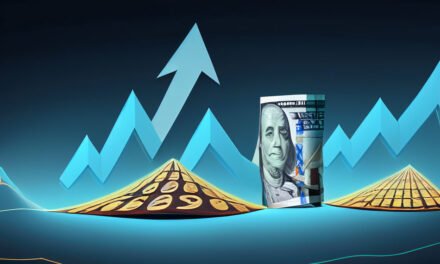In the fast-paced world of forex trading, high-frequency trading has emerged as a powerful tool for traders looking to capitalize on market opportunities. However, with great power comes great responsibility. As we delve into the world of high-frequency trading, we will explore its potential, advantages, and disadvantages, while also shedding light on the risks involved. So fasten your seatbelts as we embark on this exciting journey into the realm of high-frequency trading in forex.
Exploring the Potential of High-Frequency Trading
High-frequency trading (HFT) is a trading strategy that leverages advanced algorithms and computer programs to execute a large number of trades in milliseconds. With its lightning-fast execution, HFT has the potential to generate significant profits by taking advantage of even the smallest inefficiencies in the market. By using complex mathematical models and analyzing vast amounts of data, HFT traders aim to exploit price discrepancies and make quick profits.
However, it’s important to note that high-frequency trading is not a guaranteed pathway to riches. While some traders have found success with this approach, others have faced challenges and suffered losses. It’s crucial to understand the intricacies and risks associated with HFT before diving headfirst into this high-speed trading environment.
One of the key advantages of high-frequency trading is its ability to capitalize on market inefficiencies. By executing trades at lightning speed, HFT traders can take advantage of price discrepancies that may only exist for a fraction of a second. These price discrepancies can arise due to various factors, such as differences in information availability, market microstructure, or even temporary imbalances in supply and demand.
To exploit these inefficiencies, HFT traders rely on sophisticated algorithms that analyze vast amounts of market data in real-time. These algorithms are designed to identify patterns, trends, and anomalies that may indicate potential trading opportunities. By constantly monitoring the market and reacting instantaneously to changing conditions, HFT traders can execute trades at the most favorable prices, maximizing their profit potential.
Another aspect that sets high-frequency trading apart is its emphasis on speed and technological infrastructure. HFT firms invest heavily in cutting-edge technology, including high-speed data connections, powerful servers, and advanced trading platforms. These technological advancements enable HFT traders to execute trades within microseconds, giving them a significant edge over traditional traders who rely on slower manual execution.
However, the fast-paced nature of high-frequency trading also comes with its own set of challenges and risks. The intense competition among HFT firms means that profit opportunities may be short-lived, as other traders quickly react to market inefficiencies. This requires HFT traders to constantly adapt and refine their algorithms to stay ahead of the competition.
Moreover, the reliance on complex algorithms and automated trading systems introduces the risk of technical glitches or errors. A small coding mistake or a malfunctioning server can lead to disastrous consequences, resulting in substantial financial losses. HFT firms must have robust risk management systems in place to mitigate these risks and ensure the stability and integrity of their trading operations.
Regulatory scrutiny is another factor that high-frequency trading must contend with. The rapid and automated nature of HFT can raise concerns about market manipulation and unfair trading practices. Regulators around the world have implemented measures to monitor and regulate HFT activities, such as imposing stricter reporting requirements and implementing circuit breakers to prevent excessive volatility.
In conclusion, high-frequency trading offers the potential for significant profits by leveraging advanced algorithms and lightning-fast execution. However, it is not without its risks and challenges. Traders must carefully assess the intricacies of HFT and develop robust risk management strategies to navigate this high-speed trading environment successfully.
What is High-Frequency Trading?
High-frequency trading, as the name suggests, refers to the practice of executing a large number of trades within a short period of time using automated systems. These systems rely on complex algorithms and powerful computers to analyze market data, identify trading opportunities, and execute trades at lightning-fast speeds.
Unlike traditional trading methods, which rely on human decision-making and manual execution, high-frequency trading relies on automated trading programs to take advantage of even the smallest price discrepancies in the market. These programs can execute thousands of trades per second, making it crucial for traders to have the technological infrastructure and expertise to handle such enormous volumes of data and transactions.
Advantages and Disadvantages of High-Frequency Trading
High-frequency trading offers several advantages for traders. Firstly, the speed of execution allows traders to capitalize on fleeting market opportunities that might be missed by slower participants. This can result in higher profits and reduced risk exposure. Additionally, HFT can provide liquidity to the market, narrowing bid-ask spreads and improving overall market efficiency.
However, high-frequency trading also comes with its fair share of disadvantages. One major concern is the potential for market manipulation. Critics argue that the sheer volume of trades executed by HFT algorithms can create artificial demand or disrupt price stability, leading to market distortions. Furthermore, the reliance on complex algorithms and automated systems leaves traders vulnerable to technical glitches or system failures, which can result in significant losses.
Understanding the Risks of High-Frequency Trading
While high-frequency trading offers the potential for substantial profits, it is essential to be aware of the risks involved. One significant risk is the possibility of sudden and extreme market volatility, which can be triggered by external events or technical glitches. In such situations, HFT traders may find themselves exposed to rapid price movements that can result in substantial losses if their algorithms fail to react appropriately.
Another risk unique to high-frequency trading is the competition factor. As more traders adopt HFT strategies, competition intensifies, leading to thinner profit margins. In this highly competitive landscape, the ability to continually adapt and refine trading algorithms becomes paramount. Traders must also stay vigilant for emerging regulatory changes that may impact their trading practices.
The Benefits of High-Frequency Trading
Despite the risks involved, high-frequency trading offers several benefits that have made it an attractive strategy for traders. One key advantage is the potential for increased trading volume. HFT algorithms can execute a large number of trades within a short period, allowing traders to take advantage of even the smallest market movements.
The speed of execution provided by HFT can also result in reduced transaction costs and improved efficiency. By automating the trading process and minimizing manual intervention, HFT traders can save on execution fees and capture more favorable prices. This can ultimately lead to higher profits for skilled HFT practitioners.
Analyzing the Impact of High-Frequency Trading on Forex
High-frequency trading has had a significant impact on the forex market, transforming it into a highly dynamic and competitive trading environment. The increase in trading volume and liquidity brought about by HFT has resulted in tighter bid-ask spreads, making it more cost-effective for traders to enter and exit positions.
However, the rise of high-frequency trading has also raised concerns about market fairness and stability. Critics argue that HFT can create a two-tiered market, where institutional traders with access to advanced technology gain an unfair advantage over individual traders. To address these concerns, regulatory bodies have implemented measures such as circuit breakers and market-wide risk controls to maintain market integrity and stability.
Strategies for Successful High-Frequency Trading
For traders looking to delve into high-frequency trading, it is important to develop robust strategies and risk management techniques. Building a strong technical infrastructure that can handle large amounts of data and execute trades with minimal latency is essential. Traders must also continually monitor and refine their trading algorithms to adapt to changing market conditions.
Additionally, risk management plays a crucial role in high-frequency trading. Implementing strict risk controls and position limits can help mitigate the potential impact of market volatility. Traders should also employ pre-trade risk checks to ensure that their algorithms are functioning correctly and to prevent erroneous trades.
How to Minimize the Risk of High-Frequency Trading
While it is impossible to eliminate all risks associated with high-frequency trading, there are steps traders can take to minimize their exposure. One approach is to diversify trading strategies to reduce reliance on a single approach. By incorporating multiple strategies, traders can mitigate the impact of market volatility and potential losses in one particular strategy.
Another important aspect is the choice of technology and infrastructure. Partnering with reputable technology providers and investing in reliable hardware and software solutions can help reduce the risk of system failures or technical glitches. Additionally, establishing robust risk management protocols and conducting thorough testing of trading algorithms are crucial for minimizing potential risks.
Navigating the Complexities of High-Frequency Trading
High-frequency trading is a complex and ever-evolving field, requiring traders to stay abreast of the latest technological advancements and market trends. The ability to adapt and innovate is essential for success in this highly competitive landscape.
Traders should also be cognizant of the ethical and regulatory considerations surrounding high-frequency trading. As regulators continue to scrutinize HFT practices, traders must ensure that their strategies adhere to ethical standards and comply with all relevant regulations.
Evaluating the Cost-Benefit Analysis of High-Frequency Trading
Before embracing high-frequency trading, traders must carefully evaluate the cost-benefit analysis. While HFT offers the potential for substantial profits, the costs associated with technology infrastructure, data feeds, and regulatory compliance can be significant.
It is crucial for traders to weigh the potential benefits against the costs and risks involved. Conducting thorough research and testing strategies in simulated environments can provide valuable insights into the viability of high-frequency trading as a profitable venture.
As we conclude our exploration of high-frequency trading in forex, it is clear that while this trading strategy holds immense potential for profit generation, it is not without risks. Traders must be prepared to navigate the complexities of high-speed trading, continually adapt their strategies, and stay vigilant in managing the risks. With careful planning, technological expertise, and a deep understanding of market dynamics, high-frequency trading can be a rewarding venture for those willing to take on the challenge.






